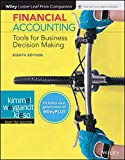
(a)
Accounting Equation: It is the mathematical equation that shows the relation between assets, liabilities and stockholders’ equity. It shows that assets balances the liabilities / stockholders’ equity. It is expressed as:
Accounting Equation

Figure (1)
The amount of stockholders’ equity at the end of the year. Follow the below equation to determine the value of stockholders’’ equity:
(a)
Accounting Equation: It is the mathematical equation that shows the relation between assets, liabilities and stockholders’ equity. It shows that assets balances the liabilities / stockholders’ equity. It is expressed as:
Accounting Equation

Figure (1)
Answer to Problem 1.9BE
Total assets at the end of the year = $950,000 (1)
Total liabilities at the end of the year = $420,000 (2)
Determine the amount of stockholders’ equity at the end of the year.
Working Notes:
Determine the amount of total assets at the end of the year.
Determine the amount of total liabilities at the end of the year.
Explanation of Solution
To determine the total stockholder’s equity, first determine total assets and total liabilities at the end of the year. Total assets at the end of the year are determined by adding the total assets at the beginning of the year, and total assets increased during the year. Then total liabilities are determined by deducting the total liabilities at the beginning of the year, and total liabilities decreased during the year.
Therefore, the stockholders’ equity at the end of the year of Company M is $530,000.
(b)
The amount of total assets at the end of the year. Follow the below equation to determine the value of assets:
(b)
Answer to Problem 1.9BE
Total stockholders’ equity at the end of the year = $230,000 (3)
Total liabilities at the end of the year = $600,000 (4)
Determine the amount of total assets at the end of the year.
Working Notes:
Determine the amount of stockholders’ equity at the beginning of the year.
Determine the amount of total stockholders’ equity at the end of the year.
Determine the amount of total liabilities at the end of the year.
Explanation of Solution
To determine the total assets, first determine total stockholders’ equity and total liabilities at the end of the year. Total stockholders’ equity at the end are determined by deducting the beginning stockholders’ equity of the year and decreased stockholders’ equity during the year. Then total liabilities are determined by adding the total liabilities at the beginning of the year and total liabilities increased during the year.
Therefore, the total asset at the end of the year of Company M is $830,000.
(c)
The amount of total liabilities at the end of the year. Follow the below equation to determine the value of liabilities:
(c)
Answer to Problem 1.9BE
Total assets at the end of the year = $720,000 (5)
Total stockholders’ equity at the end of the year = $410,000 (6)
Determine the amount of total liabilities at the end of the year.
Working Notes:
Determine the amount of stockholders’ equity at the beginning of the year.
Determine the amount of total assets at the end of the year.
Determine the amount of stockholders’ equity at the end of the year.
Explanation of Solution
To determine the total liabilities, first determine total assets and total stockholders’ equity at the end of the year. Total assets at the end of the year are determined by deducting the total assets at the beginning of the year and total assets decreased during the year. Then total stockholders’ equity at the end are determined by adding the beginning stockholders’ equity of the year and increased stockholders’ equity during the year.
Therefore, the total liability at the end of the year of Company M is $310,000.
Want to see more full solutions like this?
Chapter 1 Solutions
Financial Accounting: Tools for Business Decision Making, 8e WileyPLUS (next generation) + Loose-leaf
 Managerial Accounting: The Cornerstone of Busines...AccountingISBN:9781337115773Author:Maryanne M. Mowen, Don R. Hansen, Dan L. HeitgerPublisher:Cengage Learning
Managerial Accounting: The Cornerstone of Busines...AccountingISBN:9781337115773Author:Maryanne M. Mowen, Don R. Hansen, Dan L. HeitgerPublisher:Cengage Learning Intermediate Financial Management (MindTap Course...FinanceISBN:9781337395083Author:Eugene F. Brigham, Phillip R. DavesPublisher:Cengage LearningPrinciples of Accounting Volume 1AccountingISBN:9781947172685Author:OpenStaxPublisher:OpenStax College
Intermediate Financial Management (MindTap Course...FinanceISBN:9781337395083Author:Eugene F. Brigham, Phillip R. DavesPublisher:Cengage LearningPrinciples of Accounting Volume 1AccountingISBN:9781947172685Author:OpenStaxPublisher:OpenStax College EBK CONTEMPORARY FINANCIAL MANAGEMENTFinanceISBN:9781337514835Author:MOYERPublisher:CENGAGE LEARNING - CONSIGNMENT
EBK CONTEMPORARY FINANCIAL MANAGEMENTFinanceISBN:9781337514835Author:MOYERPublisher:CENGAGE LEARNING - CONSIGNMENT Financial AccountingAccountingISBN:9781337272124Author:Carl Warren, James M. Reeve, Jonathan DuchacPublisher:Cengage Learning
Financial AccountingAccountingISBN:9781337272124Author:Carl Warren, James M. Reeve, Jonathan DuchacPublisher:Cengage Learning




